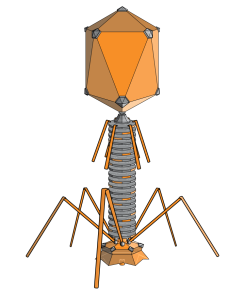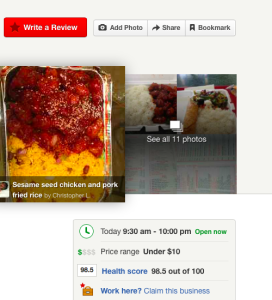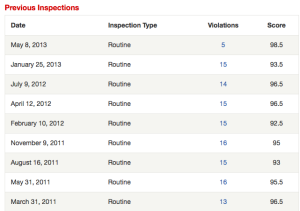I have a soft spot for the Danes, with their schnapps and pickled herring and home builders and existentialist philosophers (daughter Sorenne, get it?)
Lynne Terry of The Oregonian, who has doggedly followed the Foster Farms Salmonella outbreak, writes that the company issued an apology,  bolstered food safety measures, but people kept getting sick, with nearly 500 illnesses to date.
bolstered food safety measures, but people kept getting sick, with nearly 500 illnesses to date.
Foster Farms did not issue a recall, and the USDA did not press for one. Officials said they lack authority to ban salmonella on raw chicken. They said the bacteria were “naturally occurring” in healthy chickens and that all the public had to do was follow good hygiene in the kitchen and cook poultry thoroughly. They also said it would be impossible to get rid of salmonella in poultry.
While reporting on this story, the late William Keene, senior epidemiologist at Oregon Public Health, told me that Denmark had done just that. Talk to a food safety specialist at the Centers for Disease Control and Prevention, Keene said. He’s Danish. He’ll tell you.
In the first installment, Terry quotes Birgitte Helwigh, senior scientist at the National Food Institute of the Technical University of Denmark, as saying, “In Denmark, we have zero tolerance for salmonella in chicken meat.”
That policy has reaped enormous benefits for consumers, Helwigh said, and saved millions of dollars in medical expenses. Health authorities have not identified any human cases of salmonella poisoning due to Danish chicken meat since 2011 and they estimate there has only been about a dozen illnesses from
Denmark was jolted into battle by a surge of sickness. From the mid-1950s to the mid-1970s, the country averaged about 450 confirmed  salmonella cases a year in a population of 5 million. But in 1977 the number of illnesses started to climb, spiking at nearly 3,500 in 1988.
salmonella cases a year in a population of 5 million. But in 1977 the number of illnesses started to climb, spiking at nearly 3,500 in 1988.
Scientists pinpointed broiler meat as the culprit. Reporters latched onto the story, consumers became alarmed and the industry grew worried.
“They realized they had a salmonella problem,” said Henrik Wegener, former director of the National Food Institute and now provost of the Technical University. “They also assumed they could do something to solve it.”
No one knows exactly what caused the uptick. Bacteria can mutate and become more virulent. The Danish poultry industry had also changed. Once a scattering of small farms, companies merged and the industry became more centralized, with owners obtaining flocks from the same source.
If those flocks were contaminated, so were the chicks. Bigger chicken houses also increased the chance for contamination. The bacteria, which can live in the intestines of healthy chickens, are spread among birds through feces. If the intestines are nicked during slaughter, the meat becomes contaminated.
Industry turns to testing
In 1989, the Danish poultry industry adopted the first voluntary control measures that were tweaked and tightened over time, eventually becoming mandatory.
The first voluntary step involved testing broiler flocks for salmonella three weeks before slaughter. Testing each bird would have been far too expensive so the Danes collected fecal samples and tested them for bacteria.
If the test was positive, the whole flock was butchered late in the day in an area reserved in the slaughterhouse for contaminated birds.
The testing reduced human illnesses but not enough to satisfy health officials, scientists or industry.
Farmers, especially, were disappointed by the results, Wegener said.
“They spent quite a lot of money on testing and controls but we really didn’t get to the bottom of the problem,” Wegener said.
With processors and farms struggling amid uneven results, in 1993 the largest Danish grocery retail chain stepped in with an ultimatum: Co-op Denmark told suppliers that it would not buy their chicken meat if they did not enact measures to curb salmonella.
The retailer, with nearly 40 percent of the market, told suppliers they had to destroy flocks that had a positive test prior to slaughter. Co-op Denmark also required companies to test a sampling of butchered meat. If any positives popped up, meat from that flock was rejected.
The industry was dismayed by the requirement, said Karin Froidt, Co-op Denmark’s food safety manager.
“They thought it would pass,” Froidt said. “But then we introduced Swedish broiler meat which at the time had a lower incidence of salmonella. They found out we were serious.”
The retailer dangled an incentive, introducing a “salmonella-free” label on raw chicken from companies that complied. That label carried cache with consumers and fetched a higher price.
 outbreak was due to numbers of the Norovirus being higher than usual.
outbreak was due to numbers of the Norovirus being higher than usual.












